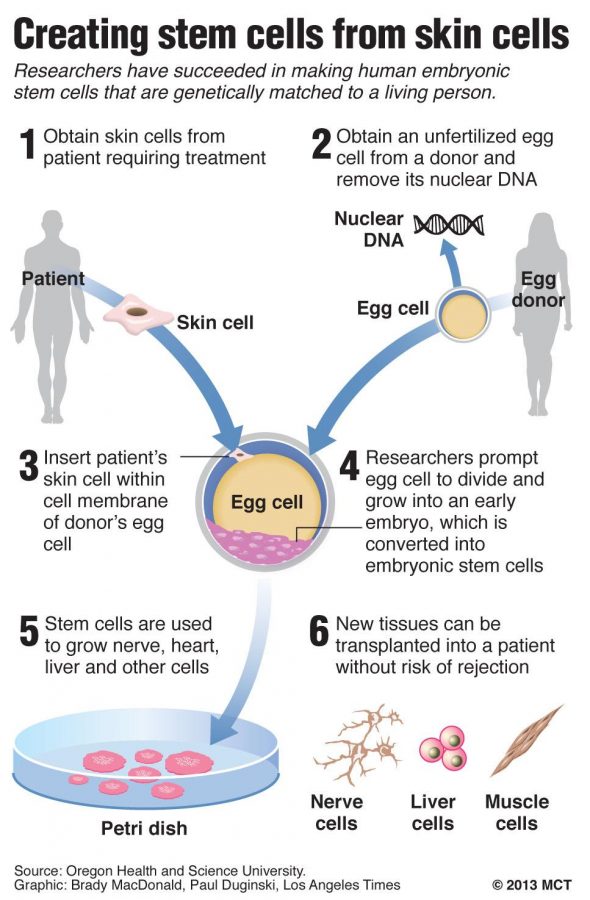After six years of collaboration, Pitt researchers Ipsita Banerjee and Prashant Kumta, said they can now launch a “very easy and cheap” way to grow stem cells to help cure Type 2 diabetes.
With current methods, researchers face high costs and waits of several days to several weeks to make enough stem cells, which function as “blank slate” cells that scientists and doctors can grow into nearly any human body cell. Banerjee and Kumta have developed a new method that allows them to grow multiple stem cells from a single cell.
Banerjee, associate professor of chemical and petroleum engineering and bioengineering, and Kumta, professor of bioengineering, received a $300,000 grant from the National Science Foundation on Sept. 15, to mass produce human pluripotent stem cells by placing single cells in a special liquid and allowing the cells to multiply.
“I thought someone must have done it, at least with other kinds of cells, but no one has,” Banerjee said.
According to Banerjee, the number of available stem cells constrains most clinical studies that hope to use stem cells to make and reconstruct human organs and cure diseases.
If Banerjee and Kumta’s method is successful, researchers around the world will be able to use their method to produce large cultures of stem cells for clinical research. The pluripotent stem cells Banerjee and Kumta plan to work with can differentiate into almost any type of cell, so they can replace damaged or diseased cells in the body.
Banerjee and Kumta submitted a pre-proposal for the study in April and their full proposal to the National Science Foundation this past summer.
The two plan to provide the interactions and the right environment, including growth medium and platform technologies, for their stem cells to undergo differentiation.
“We want to prevent cell death as much as possible,” Banerjee said.
According to Pitt spokesperson Joe Miksch, the National Science Foundation ranked Pitt 14th in research and development funds in 2013, when the NSF granted more than $850,000 in funds.
In their natural environment, cells usually exist in some kind of liquid. The liquid surrounds the cells and allows cells to communicate with one another. Banerjee and Kumta’s method will use a synthetic gel suspended in water that will allow the cells to mimic their natural chemical communications.
With current methods, stem cells must be near other stem cells in order to divide properly. Banerjee and Kumta will then place a stock of adult human stem cells into the mixture to allow them to start dividing. Each stock cell has the potential to divide into billions of cells.
According to Kumta, they will embed the stem cells in a capsule made of alginate, a type of acid derived from seaweed that provides the right cues for cell interactions. Before cells divide and propagate, they send chemical messages to other cells indicating they are ready to divide. The two researchers will provide the stem cells with engineered proteins that mimic these chemical messages.
“They don’t like to grow on their own when singly isolated,” Kumta said. “They need to be nurtured.”
This will cause the stem cells to act as though they are interacting with other cells when they are actually isolated — thus allowing them to multiply in a new environment. According to Banerjee, about 70 percent of stem cells die when propagating because they lack cell-to-cell interactions.
Banerjee said the method requires materials that are FDA-approved and common to any lab working with pluripotent stem cells.
“We hope [our method] will be readily adopted by any lab working with pluripotent stem cells,” Banerjee said.
Banerjee said researchers don’t yet have a good way to scale up stem cell propagation. Current methods involve two-day tissue cultures, which grow cells in a medium outside of the organism, and 3-D suspension cultures, where cells grow evenly distributed in a liquid growth medium.
After the researchers grow the stem cells, they must differentiate the cells — making them into a more specific type of cell, like a skin cell or a blood cell. Banerjee said other researchers have had success with differentiating pluripotent stem cells into liver, heart, pancreatic and brain cells.
Kumta said their main focus is on Type 2 diabetes mellitus. They hope to differentiate stem cells into pancreatic cells that will be able to produce insulin. Patients with Type 2 diabetes are unable to produce enough insulin — a type of hormone that allows body cells to absorb glucose after a person eats food.
“It’s mind boggling how many uses stem cell have,” Banerjee said. “The impact will be pretty huge.”



